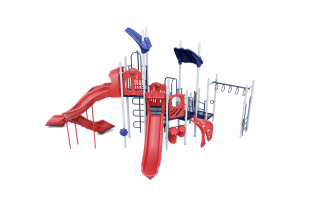History of school playground and response to Mass motorisation

While a playground is commonly planned for youngsters, some are expected for other age social occasions or people with inadequacies. A playground might bar kids under a particular age. Present-day School Playground Equipment every now and again have sporting equipment like the seesaw, merry go round, swingset, slide, wild rec focus, jaw up bars, sandbox, spring rider, stunt-devil rings, playhouses, and mazes, an enormous number of which help kids with making real coordination, strength, and versatility, similarly as giving entertainment and fulfillment and supporting social and enthusiastic development. Typical in present-day playgrounds are play structures that interface different pieces of stuff.
- Playgrounds consistently moreover have workplaces for playing easygoing rounds of adult games, similar to a baseball field, a skating field, a b-ball court, or a tie ball.
- Public playground gear is presented in the play spaces of parks, schools, childcare workplaces, associations, different family dwelling places, diners, resorts, and donning new developments, and various spaces of public use.
- A sort of playground called a playscape is planned to give a secured environment to play in a trademark setting.
History :
Since the start, kids played in their towns and neighborhoods, especially in the streets and ways near their homes.
In the nineteenth century, developmental examiners, for instance, Friedrich Fröbel proposed playgrounds as a developmental aid, or to overrun young people with a sensation of sensible play and extraordinary propensities. In Germany, several playgrounds were brought up in a relationship with schools, the essential explanation being that a local area playground was opened in an entertainment place in Manchester, England in 1859.
Response to Mass motorization:

Regardless, it was particularly during the 20th century, as the street lost its employment as the default public space and plans were made for use by motor vehicles, that power attempted to kill kids from the new dangers and confine them to separated locales to play. In the United States, for instance, the National Highway Protective Society included the numbers killed through cars, and requested the making of playgrounds, hoping to free streets for vehicles rather than children’s play. The Outdoor Recreation League offered resources for raise playgrounds in parkland, especially following the 1901 circulation of a report on amounts of children being run someplace close to vehicles in New York City.
Coupled with the new stress over the danger of roads, educational theories of play, including by Herbert Spencer and John Dewey energized the ascent of the reformist playground advancement, which battled that playgrounds had enlightening worth, further created thought in class, updated real prosperity, and reduced wrongdoing. Interventionist projects, for instance, by the child savers attempted to move youths into controlled districts to confine ‘offense’. Meanwhile, at schools and settlement houses for less lucky youths with confined induction to guidance, prosperity organizations and childcare, playgrounds were fused to help these establishments’ unbiased of keeping kids secured and free.
One of the principal playgrounds in the United States was San Francisco’s Golden Gate Park in 1887. In 1906 the Playground Association of America was set up and following a year Luther Gulick became president. It later transformed into the National Recreation Association and thereafter the National Recreation and Park Association. Empowering the prerequisite for playgrounds, past President Theodore Roosevelt communicated in 1907.
